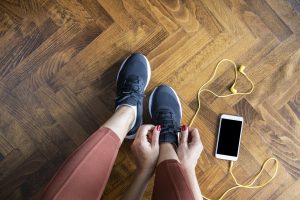
Exercise can be great for strong bones, particularly for people at risk of osteoporosis. But activity can be a double-edged sword. While it can help strengthen bones, it also serves as a risk factor for falls and fractures.
Footwear is the first line of defense against one of these unfortunate events. The right boots or shoes can help prevent slipping and falling indoors and out while helping you achieve stronger bones, better mobility, and improved physical and mental health.
Like so many other things, bone health can come from the ground up.
Your footwear should have good treading to help you maintain balance on smooth and uneven surfaces. If you’ve been wearing the same boots or sneakers for a while, take a look at your treads. Substantial wear increases the risk of falls, so it may be time for a replacement.
Research suggests deeper treads, around 3-5 mm, can reduce the risk of slippage.
Sizing is also an important issue to pay attention to. Shoes that are too big can increase the risk of tripping, while also contributing to blisters and gait changes. Small shoes can limit circulation and cause discomfort. Get shoes that fit snuggly when tied.
Wearing shoes indoors is recommended for people 60-plus, particularly in uncarpeted areas of your home. Once again, treaded sneakers are the best option. Tile and hardwood can be slippery and shoes with good grip can prevent falls.
Slippers are not generally recommended for regular wear, but if you do have some, ensure they have a rubber sole with treading. Sandals and flip flops should always be avoided.
If you’re interested in safely staying active and increasing bone density, a good pair of shoes can help you get there. When you’re upright and moving safely with a low risk for falls, good things happen!